In this chapter I explain how to leave the dock under sail. I assume that we want to leave from a jetty that extends into the water. Like for example from the bank into a lake. But the method works anywhere else too, even in a harbour basin. May be you have to paddle a bit to reach a mooring post or a mooring buoy. There has to be enough space leeward behind it.
In my figures we leave from a jetty for demonstration. The first question is … ? Right: Where are the life jackets? Because if you fall into the water then mostly from the jetty, or when boarding the boat. The second important question for sailing is … ? Right: Where does the wind come from? And which wind is the wind we are interested in when leaving the dock … ? Right, the true wind. We find this out by watching flags or the wind vane on our mast, as long as the boat lies still. When our boat is located windward of the jetty we have to pull ore paddle it to the leeward side. If there is not enough space leeward the boat we might have to pull or paddle it to the top of the jetty.
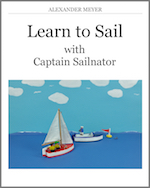 This online sailing course has also been published as ebook and paperback. For more information click here!
This online sailing course has also been published as ebook and paperback. For more information click here!
You can download the Ebook for example at:
iTunes UK & iTunes US | iBooks for iPad and Mac
Amazon.com & Amazon.co.uk | Kindle-Edition
Google Play | for Android
The paperback is available for example at:
Amazon.com | Amazon.co.uk
It is important that the bow faces straight into the wind. The boat has to be able to swing to both sides if the bow is fixed with one dock line at the jetty. When you enter the boat you should walk in the middle of the deck. Dinghies are not very stable on the water and heel immediately to the side where human ballast is placed. If someone of the crew is already onboard, we always go to the opposite side to him to prevent capsizing in the harbour.
The boat now has to be prepared for leaving. We check if all necessary equipment is on board and take off the tarpaulin from the mainsail. We attach the halyard to the heads of the sails and the jib to the forestay. Then we attach the jib sheets to the clue of the jib. The mainsheet has to obligatorily be released now, because the mainsail has to be able to swing leeward when hoisting it. If it cannot swing it builds up resistance to the wind. Then the boat turns with every gust of wind and the boat may start to sail already. Directly into the jetty!
Which sail do we hoist first … ? If we hoist the jib first it luffs all the time while we hoist the mainsail. Jib and sheet flutter around our ears. That makes an annoying noise and is also bad for the material. So start off, with hoisting the main sail. The commands are: “Ready to hoist mainsail?” “Ready!” “Hoist mainsail!” When raising up the mainsail we should not touch the mainsheet or the boom. If we do it the same would happen as when the mainsheet is fixed. It might fill with wind and the boat starts to sail. Where to … ? Right, directly into the jetty. Now the jib has to be raised. The commands are: “Ready to hoist the jib?” “Ready!” “Hoist jib sail!” Now both of the sails are hoisted and the only connection to the jetty is one docking line on the bow. If we do nothing now the boat will settle down head up to wind and the boom will be in the middle of the boat behind the mast.
How do we continue now? For that we ask ourselves: Where do we want to go to? Will we leave on starboard tack or on port tack? When the boat on my figures leaves on port tack it runs into the banks. So we have to leave on starboard tack. Which side does the helmsman have to sit on in this case? As we know, he always sits opposite of the mainsail. So when we leave on starboard tack the sails will be blown to port side, because there is leeward. So in our case the helmsman sits on starboard. (Figure 103)

Figure 103: Command: „Ready to leave on starboard tack?” Answer: “Ready!”
Where does the tiller point to if we want to sail backwards away from the jetty on starboard tack? The position of the tiller is the same as if we would sail forward in the direction of the jetty. We would sail up head to wind. And what do we do when we sail up head to wind? Right, we head up. And what do we do with the tiller when we head up … ? Right, we push it away. So when we leave the dock on starboard tack the tiller points to port side.
The helmsman has now found his position and pushes the tiller away from him. But what is the job of the crew? He stands on the jetty and releases the docking line from the cleat on the jetty but it is still fixed on the bow. He takes the line in his hand. (If he lets loose the boat sails away without him.) He waits till the boat is exactly head up to wind. That ensures that the boom is exactly in the middle. With one hand he now holds the forestay. He puts one foot on the deck and pushes himself and the boat away from the jetty with the other foot. Hopefully he now stands on the deck.
To support the boat’s drift backwards he holds the jib back. It fills with wind on what is actually the wrong side and pushes the boat backwards. But on which side does he have to back the jib?
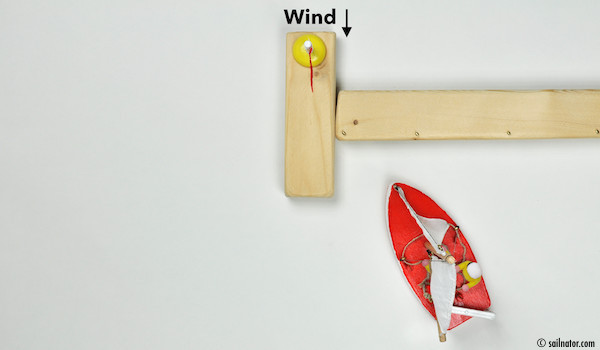
Figure 104: Commands: „Back jib on starboard!! Cast off!”
What happens if he backs the jib on the side that the helmsman intends to sail to? In our case that is port side. First we would sail backwards as we wanted to, but the boat will turn with the stern to starboard. So at one point the jib gets wind from starboard. Instead of being pushed backwards the boat will start sailing forward. It will run directly into the jetty again.
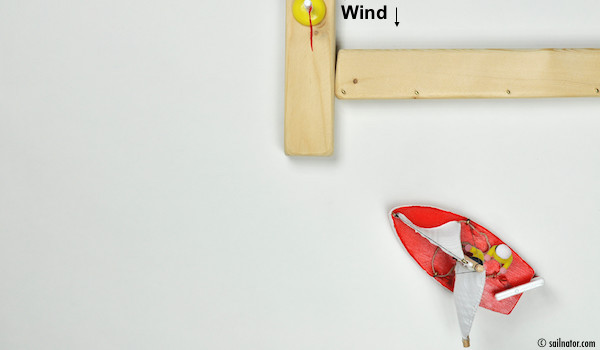
Figure 105: The wind blows into the backward trimmed jib. The boat picks up speed, going backwards.
If we back the jib on the side we do not intend to sail to the wind blows into the wrong side of the sail all the time. It supports the movement backwards and the turn. (Figure 105) Slowly but surely the bow will turn to the direction we intend to sail to. (Figure 106) The crew now places himself into the cockpit and ducks to prevent to bang his head on the boom.
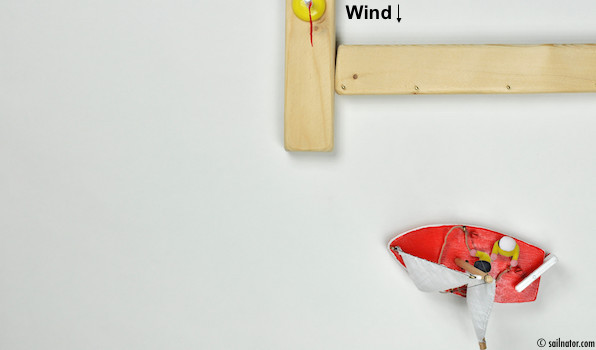
Figure 106: The jib has to be released and to be pulled to the other side.
The jib has to be pulled leewards to the other side and the helmsman trims the mainsail that has been blown far leeward by turning. Both sails have to be trimmed for the course that we want to sail (Figure 107) and off we go. (Figure 108)
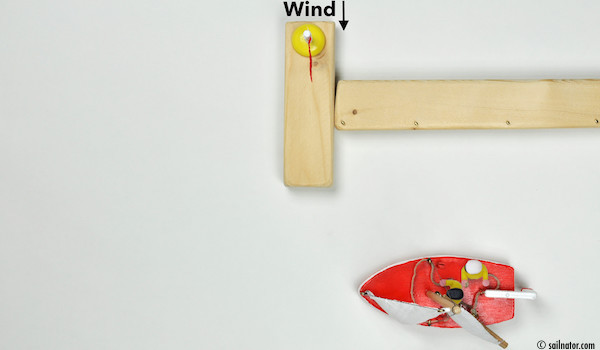
Figure 107: Command: “Trim sails on beam reach!”
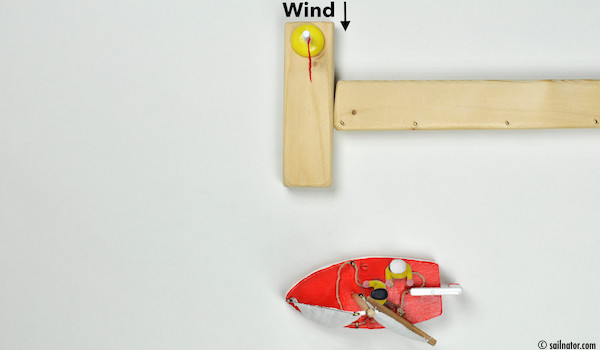
Figure 108: Command: “Sailing beam reach!”
We can remember the progress of leaving the dock like this: The helmsman sits on the side he does not intend to sail to. The jib is held backward on the same side. But the tiller points to the side the helmsman intends to sail to.
Watch my stop motion video about leaving the dock with Jenny and Tom →
When the boat is head to wind at the jetty the commands to leave the dock are: “Ready to leave on starboard tack/port tack!” “Ready!” “Back jib on starboard/port side! Cast off!” Once we have left the dock and the boat is abeam to the true wind we call: “Release jib sheet! Trim sails on beam reach!”
The wind does not always blow in such an ideal angle to the jetty as in my figures. It is possible that our boat lies between two others that are fixed with a docking line at the jetty too. Then we have to keep the tiller in the middle while leaving, until we have left the box. Only once we have passed the other boats we push it away from us. Sometimes the sterns of the other boats are fixed on mooring posts or on a mooring ball and so the boats are not head to wind. In that case we have to pull or paddle the boat out of the box to a place where we can do the manoeuvre properly.
Do you remember the rules on how to leave the dock … ? Right: The helmsman sits on the side he does not intend to sail to. The jib is held backward on the side the helmsman does not intend to sail to as well. But the tiller points to the side the helmsman intends to sail to.
Now we are able to leave the dock and to sail all the manoeuvres. But how do we get back to the dock? I will explain this in the next chapter.
← Last chapter | Next chapter →
All chapters: Technical Terms | The theory behind sailing |Close-hauled | Beam reach | Broad reach | Sailing downwind | Tacking | Beating | Quick-turn | Sailing up head to wind | Man overboard | Jibing | Heaving-to | Leaving the dock | Berthing | Rules of the road 1 | Rules of the road 2 | Rules of the road 3 | Reefing | Capsizing